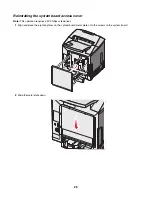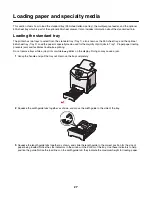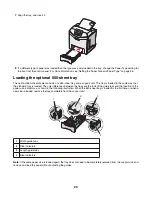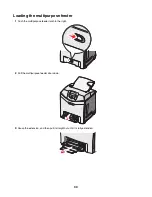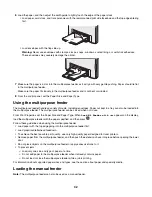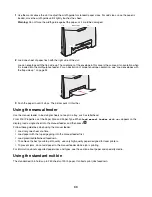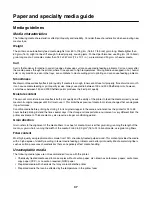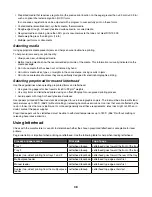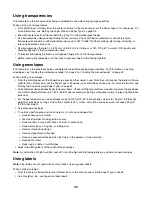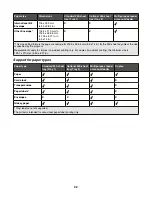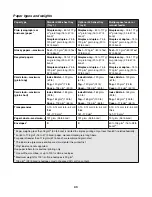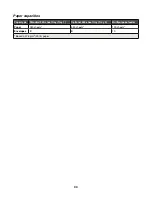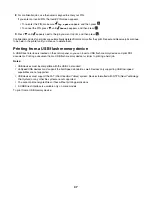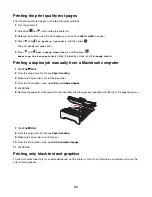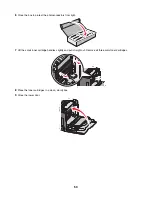
•
Preprinted media that requires a registration (the precise print location on the page) greater than ±2.3 mm (±0.09 in.),
such as optical character recognition (OCR) forms
In some cases, registration can be adjusted with a program to successfully print on these forms.
•
Coated media (erasable bond), synthetic media, thermal media
•
Rough-edged, rough, or heavily textured surface media, or curled media
•
Recycled media containing more than 25% post-consumer waste that does not meet DIN 19 309
•
Media weighing less than 60 g/m
2
(16 lb)
•
Multiple-part forms or documents
Selecting media
Using appropriate media prevents jams and helps ensure trouble-free printing.
To help avoid jams and poor print quality:
•
Always
use new, undamaged media.
•
Before loading media, know the recommended print side of the media. This information is usually indicated on the
media package.
•
Do not
use media that has been cut or trimmed by hand.
•
Do not
mix media sizes, types, or weights in the same source; mixing results in jams.
•
Do not
use coated media unless they are specifically designed for electrophotographic printing.
Selecting preprinted forms and letterhead
Use these guidelines when selecting preprinted forms and letterhead:
•
Use grain long papers for best results for 60 to 90 g/m
2
weights.
•
Use only forms and letterhead printed using an offset lithographic or engraved printing process.
•
Avoid papers with rough or heavily textured surfaces.
User papers printed with heat-resistant inks designed for use in xerographic copiers. The ink must be able to withstand
temperatures up to 180°C (356°F) without melting or releasing hazardous emissions. Use inks that are not affected by the
resin in toner. Inks that are oxidation-set or oil-based generally meet these requirements; latex inks might not. When in
doubt, contact the paper supplier.
Preprinted papers such as letterhead must be able to withstand temperatures up to 180°C (356°F) without melting or
releasing hazardous emissions
Using letterhead
Check with the manufacturer or vendor to determine whether the chosen preprinted letterhead is acceptable for laser
printers.
Page orientation is important when printing on letterhead. Use the following table for help when loading letterhead.
Process or paper source
Print side
Top of page
Tray 1
Letterhead faceup
Letterhead goes toward the front of the tray
Tray 2
Letterhead faceup
Letterhead goes toward the front of the tray
Duplex (two-sided) printing from trays 1 and 2
Letterhead facedown Letterhead goes toward the rear of the tray
Multipurpose feeder
Letterhead facedown Letterhead top edge enters first
Manual feeder
Letterhead facedown Letterhead top edge enters first
Duplex (two-sided) printing from the mulitpurpose
feeder
Letterhead faceup
Letterhead top edge enters last
38
Содержание InfoPrint 1634
Страница 1: ...InfoPrint Color 1634 MT 4931 User s Guide S510 6845 00 ...
Страница 8: ...8 ...
Страница 68: ...In either case push the paper farther into the manual feeder 68 ...
Страница 105: ......
Страница 106: ...Printed in USA S510 6845 00 ...


